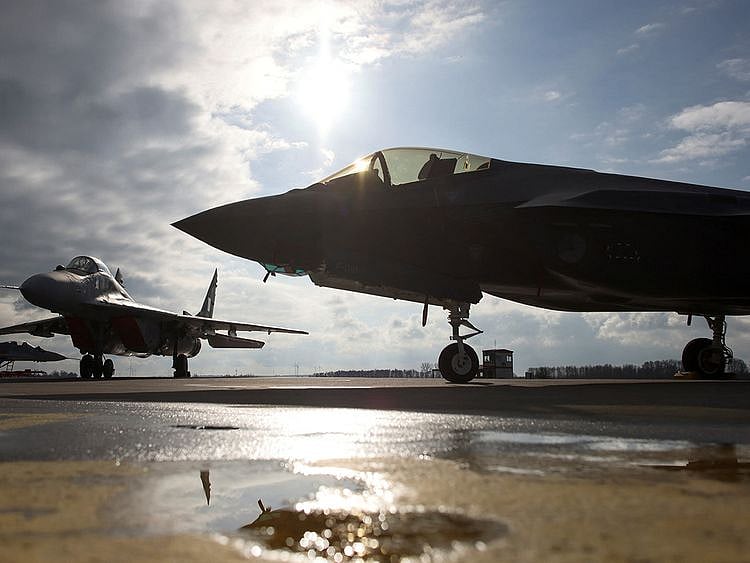Is Nato committed to environmental sustainability?
Nato, mainly the US army, has yet to frame concrete approaches to reduce carbon emissions

There are only 31 countries in the world without a military, and these are primarily small island countries. On the other hand, 172 countries have kept active armed forces, and the world spends more than two trillion dollars on them annually.
Though the military is rarely mentioned in climate change debates and negotiations, its bases, equipment, transportation, and arms contribute at least five per cent of the global greenhouse emission. This five per cent does even include the massive release of climate warming gases from the wars, and if that gets included, the share goes up to six per cent.
The carbon emission from the military sector is so huge that it is even higher than that of civil aviation. However, in the name of national security, armed forces remain above scrutiny. Due to US pressure, the Kyoto protocol exempted the military from carbon-emitting targets in 1997.
The 2015 Paris Agreement has also left the reduction of military emissions to the discretion of individual member states. With the increasing military spending by the countries worldwide and the raging war in Europe, there is very little possibility that the country would soon seriously engage in cutting down military emissions voluntarily.
Military’s carbon emissions
It is quite a challenge to estimate the military’s carbon emissions correctly. The Nato countries are members of the OECD. They regularly publish data on energy consumption and economic activities, making it possible to estimate their military greenhouse gas emissions somewhat reliably.
Similar data from big militaries like China, India, and Russia are not easily accessible. However, the Nato countries spend around 55-60 per cent of the global military expenditure and the US alone accounts for more than 40 per cent. So, Nato’s approach towards greening its militaries matters the most.
In the 2022 Madrid summit, Nato Secretary General announced an organisational cut of greenhouse gas emissions of at least 40 per cent by 2030 and to net zero by 2050. This declaration is laudable, but Nato did not say how it would achieve this ambitious target.
Nato member states have also committed “themselves to engaging in the energy transition by significantly reducing greenhouse gas emissions from military activities and installations without impairing personnel safety, operational effectiveness, and the deterrence and defence posture.” This is a positive step despite serious limitations, but there are no specific commitments or clear road maps for reducing military emissions.
World’s largest military
If any meaningful reduction in military emissions is to be achieved worldwide or within the Nato bloc, the place is to start with the US, which has the world’s largest military. No other agency uses more petroleum than the US military, with its 500 domestic and 75 bases worldwide.
The carbon footprints of the American armed forces are greater than that of Sweden, Denmark, and Norway combined. For the last two decades, the US military has been discussing its concerns over climate change.
In 2003, when the Bush administration was in climate denial mode, the Department of Defence even brought out a report on how rising temperatures could affect the country’s national security.
Obama administration indirectly worked to reduce carbon emissions of the US military by trying to cut down the fuel costs for military operations in Iran and Afghanistan and also to decrease the number of fuel-transport convoys as those were highly vulnerable to enemy attacks.
The Trump administration ignored the climate change part in handling the affairs of the Pentagon. Under President Biden, the Department of Defence created a Climate Adaptation Plan in September 2021.
However, in an executive order, in December 2021, though Biden pledged to bring down the federal government’s carbon footprint to zero by 2050, he left out anything related to national security from its purview.
America’s strategic interests
In October 2022, the US Army released its Climate Strategy Plan. Still, the American armed force is reluctant to cut down its aims, that is, to remain the most powerful military in the world. The strategists in the Pentagon are averse to making any emission cuts as it might adversely affect America’s strategic interests.
The war in Ukraine and the emergence of a new Cold War scenario have given them more ammunition to fight for their cause. Going green is also expensive in the short or medium term compared to transporting fuels into war zones.
‘Military greening’ was receiving some attention among the Nato members in Europe in recent years, but the war in Ukraine has almost stopped that ambition.
Though environmental policies and mitigation practices are in place for the militaries of all these countries, their effectiveness is rarely reviewed as militaries are usually excluded from discussion in European environmental performance indicators.
Moreover, since last year, the European countries have been increasing their military budget significantly, and the rush to strengthen the military firepower removes whatever pretension they had to reduce the greenhouse gas emission of their armed forces.
Military activities like wars or preparation for wars can never be green; only some policies can reduce carbon emissions to some extent and minimise environmental impacts. Nato, particularly the US military, has yet to frame concrete approaches to reduce carbon emissions.
Till now, their main priority has been how to adapt their bases and operations to changing climate but not doing anything to halt the climate change.
Instead of greenwashing, if Nato is concerned about climate change, it should call for an end to all wars and cut down on the number of weapons its member countries are manufacturing and buying.
Network Links
GN StoreDownload our app
© Al Nisr Publishing LLC 2025. All rights reserved.